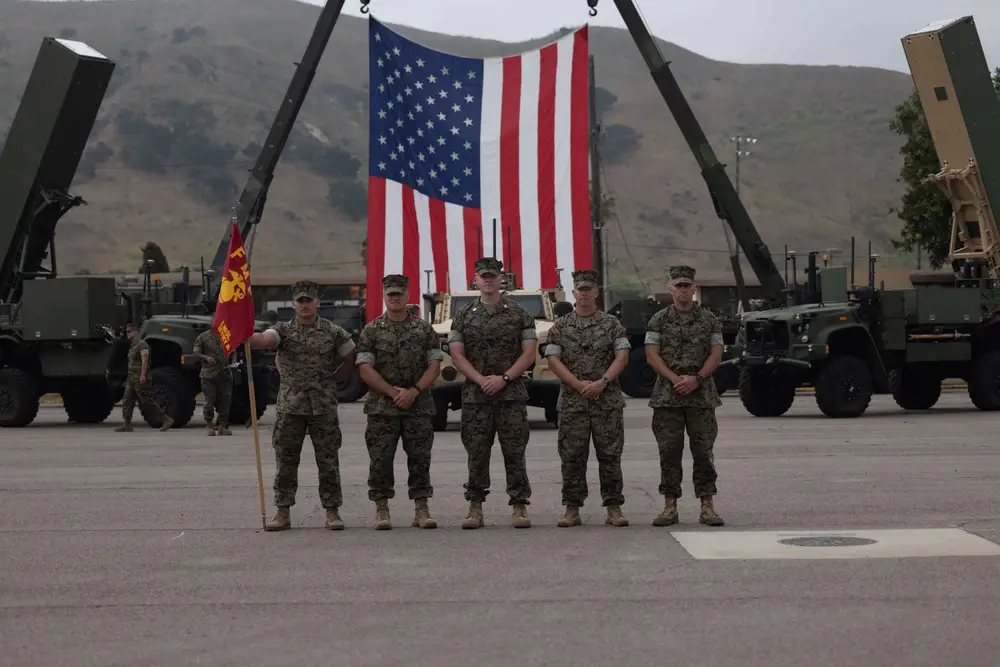In a historic event at Marine Corps Base Camp Pendleton, California, the 11th Marine Regiment, 1st Marine Division activated the Marine Corps’ first long-range cruise missile battery during a ceremony July 21. The new battery, which falls directly under 11th Marines, is designed to enhance the division’s and the joint force’s long-range strike and eventually sea denial capability and lethality. The battery will train with long-range fires launchers, designed to fire Tomahawk cruise missiles, and various supporting assets to further refine the structure and requirements necessary for successful employment of the system. The battery’s Marines, along with 11th Marines’ leadership, will continue to refine tactics, techniques, and procedures to employ the long-range fires system in support of 1st MARDIV and I Marine Expeditionary Force initiatives.
“This is a historic chapter in the Marine Corps and the 11th Marine Regiment. The American people expect the Marine Corps to prepare for war. There are nefarious states and actors in our world today who are credible threats to their neighbors, to our allies, and to the United States. The requirement for this capability now exists and the SecDef turned to the Marine Corps, the Marine Corps turned to 11th Marines, and we turn to Alpha Battery and our test and evaluation partners to make this capability a reality,” said Col. Patrick Eldridge, the commanding officer for 11th Marines.
“It is truly a privilege and honor to stand with these Marines as we move forward with the long-range fires capability. These Marines have done phenomenal things. They took an idea and are making it work. The job just started, but this capability will be able to reach out and provide devastating and lethal fires,” said Capt. Justin Hillebrand, who became the battery’s first commander during the ceremony.

The long-range fires platform is an emerging capability for the Marine Corps and is growing as part of the broader ground-based anti-ship missile development for the service. In addition to the long-range missile battery activation, Marines with 2nd Battalion, 11th Marine Regiment, 1st MARDIV executed the first live-fire Naval Strike Missile test conducted by Marines of the Navy/Marine Corps Expeditionary Ship Interdiction System (NMESIS) last month to demonstrate the firepower of another emerging capability. In conjunction with Marine Corps Systems Command, the NMESIS successfully launched and engaged a simulated target off the coast of Southern California. NMESIS is the Marine Corps’ material solution for the ground based anti-ship missile capability through the Remotely Operated Ground Unit for Expeditionary Fires platform
NMESIS is a land-based missile launcher platform that provides the Fleet Marine Force with an anti-ship capability. NMESIS integrates a NLU, capable of launching two NSMs, onto a Remotely Operated Ground Unit for Expeditionary Fires carrier. The NLU is controlled by the WCS located externally in a command and control vehicle. The long-range fires platform, NMESIS, and other fire support assets are only part of 1st MARDIV’s commitment to sea denial. Maritime reconnaissance, port and airfield seizure, and a continued emphasis on small unit leadership and tactics all drive the division toward capabilities and experience necessary to compete on the modern battlefield. Despite the advances in technology, formations, and tactics, 1st MARDIV Marines and Sailors relentlessly train fire and maneuver skills and will continue to build on the basics of the combined arms dilemma.
















